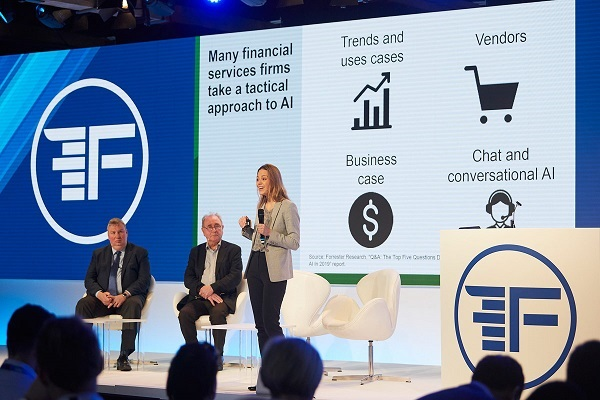Beyond Innovation Theatre
Innovation is all about value creation.
Or at least it should be.
It’s easy to get caught up in the front end of the process. Brainstorming new ideas, drawing on whiteboards, and moving different colored sticky notes around the wall is fun. But all of that should be a means to an end. That end should be about creating value; whether it’s improving the customer experience, taking the cost out of a process, or creating a new feature or a completely new product category.
Most of the work I do is centered in financial services, which is not exactly known as an industry that excitedly embraces change. I spend a lot of time trying to convince leaders that they need to innovate, and that maintaining the status quo is a slow train to irrelevancy (and that the train is heading down a steep grade and picking up speed).
Over the past ten years (most of) the industry has gotten the message, helped more than a little bit by the perceived threats and opportunities of FinTech. A recent PWC survey showed that 83% of bankers said that at least part of their current business is at risk of being lost to standalone FinTech companies.
In 2013 I said that the innovation maturity of the financial services industry is best represented by a power curve, with a very small group of Leaders, followed by a small but growing group of Learners, and a long tail of Laggards. As we enter 2017 all three groups are still represented, but there has been some fattening in the middle as more and more Laggards have entered the status of Learners.
Learners get that just doing the same old same old is a sinking proposition within a rising tide, even if they’re not sure exactly what to do or how to get started. Naturally, they are often inspired by the cool and interesting things that the Leaders are doing.
Tempering inspiration with reality
This inspiration should be tempered with a strong chaser of reality. Some of the flashier things are simply what my friend and colleague Dave Kucera likes to call “Innovation Theatre”. Sometimes that’s intentional, part branding exercise to position the company as a thought leader in the minds of its customers (and/or competitors). Other times it’s unintended, a result of losing track of the whole purpose of innovation.
Shiny new objects can be compelling, especially to those people whose job description contains the word “innovation”. Don’t get me wrong, innovation labs that look like Silicon Valley startups, hackathons, and teams of bearded hipsters in hoodies leading design workshops are a few of my favorite things. But they too are just means to an end. (The great Steve Blank has his own deep thoughts on this. Read this if you’re thinking of standing up an innovation outpost. )
Most innovation work— at least that which is truly about value creation, not just branding— is usually much more bland and quotidian. “Blue collar innovation” is how one leader of a top 10 U.S. Bank recently described it. With one eye firmly fixed on the Jobs to Be Done. The key questions are: What value are we creating for whom here, and how do we know when we get there?
Clayton Christensen’s book The Innovator’s Dilemma will turn 20 years old this year. The lessons of how new technologies disrupt mature industries are still being played out today in financial services, media, transportation, and just about any other industry you can name.
In his new book Competing Against Luck: The Story of Innovation and Customer Choice, he focuses on making innovation a reliable engine for growth, and it is centered on the Theory of Jobs to Be Done— “What exactly did you hire this product to do?”
Christensen points out that a primary reason why some new innovations don’t reach wide market adoption is because the new offering does not do a better job than the existing thing that the customer “hired” to get a specific job done (let alone overcoming the cost and pain of making a change).
Knowing that you are being disrupted and committing to doing something about it is an important first step. Focusing on the Jobs to be Done ensures that you’re solving the right problems for the right people in the right way at the right time. That is value creation.
Anything less is just Innovation Theatre.
This article originally appeared here. Republished with permission. Submit your copyright complaints here.























